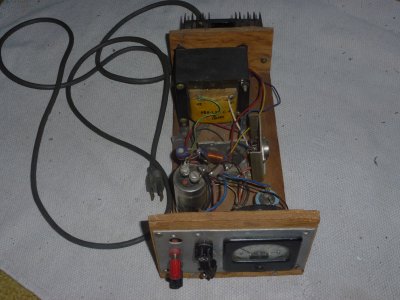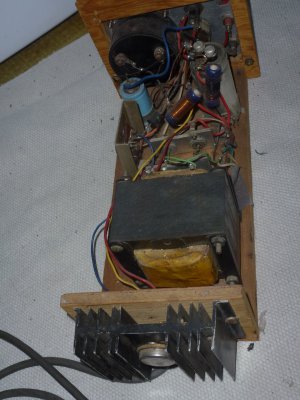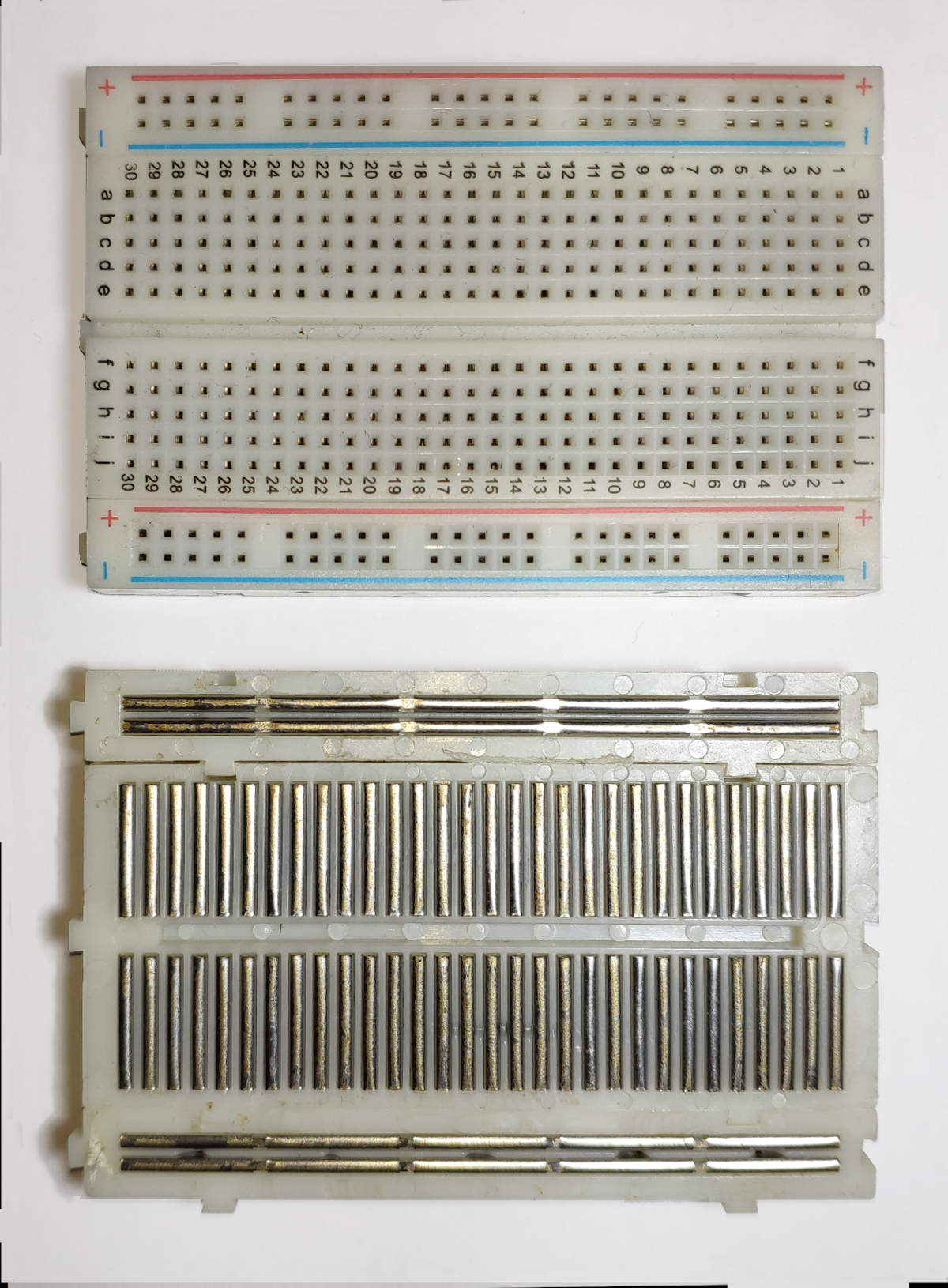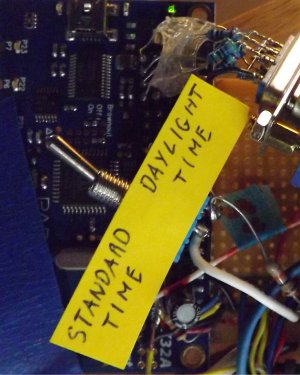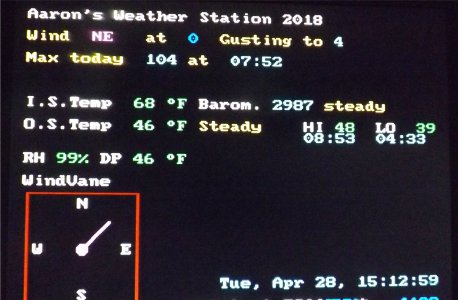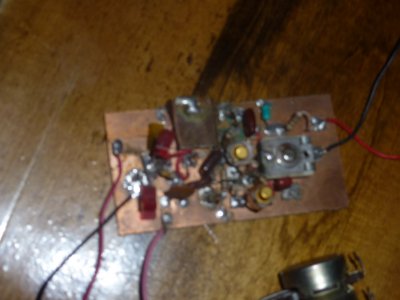View attachment 322508
Above is a photo of a variable power supply I built using an LM317 voltage regulator. The meter on the front
panel is from an old volt-ohm meter shunted to read in volts. It was built breadboard style and
uses a variable resistor to control voltage output. The bridge rectifier part was fashioned from four diodes
extracted from an old car alternator. The 317 regulator(TO-3 package) is visible behind the meter mounted on the
bent aluminum heat sink. I find the variable power supply very handy for charging batteries as one can
easily control the voltage and thus the current the supply will impart to the battery. The unit easily
will supply 8 amperes at 12+ volts.
View attachment 322509
This photo exposes the power transistor used to handle the heavy currents. The resistors wrapped with copper
wire were made to create the low resistances needed for the circuit. Behind the transformer one can see two
of the diodes of the four mounted on 1/8 inch aluminum plate. The circuit is quite straight forward and the
breadboard design makes for an easy build. Most of the parts were from salvaged electronic junk. If the
spirit moves me, I will mount the unit in a nice metal cabinet. If I require a current reading, I connect an ammeter
in series with the output, an addition that I would use if I mount the supply in a metal box.


